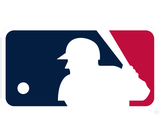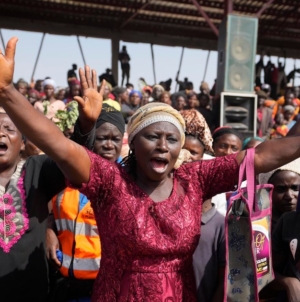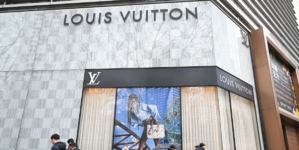-
Gunmen kill at least 52 people and displace hundreds in northern Nigeria - 29 mins ago
-
Astros vs. Mariners Highlights | MLB on FOX - 32 mins ago
-
Apple’s Plan to Source More iPhones From India May Be Double Blow to China - 35 mins ago
-
How to Buy Florida Gators NCAA National Championship Merchandise: Shirts, Hats, Hoodies - about 1 hour ago
-
College basketball rankings: Houston, Purdue headline way-too-early Top 25 - about 1 hour ago
-
China vows to ‘fight to the end’ if Trump raises tariffs to 104% - about 1 hour ago
-
China Ramps Up Trade War With New Countermeasure Threat Over 50% Tariff - 2 hours ago
-
Twins vs. Royals Highlights | MLB on FOX - 2 hours ago
-
Globalization made America rich. Now, Trump’s tariffs may upend it. - 2 hours ago
-
Mets Predicted To Steal $79 Million Kyle Schwarber From Hated Phillies - 3 hours ago
Map Reveals Top 10 States With Most Unsellable Condos
A growing number of condominiums across the country have been “blacklisted” by the Federal National Mortgage Association, better known as Fannie Mae, because their associations do not have adequate property insurance or cannot afford to conduct critical building repairs.
If a condo is on the list—which is only accessible to mortgage lenders—, potential buyers are likely to have a harder time getting a mortgage. That means, effectively, that owners are going to have a very hard time selling them—a particularly bad proposition for the hundreds of people trying to get rid of their condos in South Florida as a new building safety law promises to bring fees even higher.
Why It Matters
Amid a housing affordability crisis, many condo associations are trying to limit the rise of monthly fees by opting for higher insurance deductibles and by delaying necessary maintenance work.
But these same measures trying to shield struggling condo owners from skyrocketing housing costs are also making these properties near impossible to sell, as Fannie Mae and the Federal Home Loan Mortgage Corporations (Freddie Mac), which guarantee most of the mortgages made in the U.S., won’t cover them.
What To Know
Fannie Mae’s “mostly secret mortgage blacklist,” as The Wall Street Journal described it when first reporting on the issue, now includes 5,175 properties, according to what Stephen Marcus, a condo lawyer at Boston law firm Allcock & Marcus, told the newspaper. More than 1,400 of these condos are in Florida.
That is a significantly higher number than the few hundreds reported before the Surfside collapse that killed 98 people in Florida in June 2021.
The tragedy involving the 12-story beachfront condo in the Miami suburbs is one of the reasons why Fannie Mae’s blacklist has grown in recent years, together with the property insurance crisis unfolding across the country.
Homeowner insurance has become more costly and harder to procure for millions of Americans over the past few years, as the costs of climate-related events is pushing insurers to either significantly hike rates or cut coverage in the most vulnerable parts of the country.
Last year, according to recent data from S&P Global Market Intelligence’s RateWatch, 33 states faced double-digit rate increases, with Nebraska facing the largest calculated increase at 22.7 percent. The national average rise in the effective rate was 10.4 percent.
To lower their insurance costs, many condo associations are opting for cheaper, more limited insurance policies—but that means they then often fail to meet Fannie Mae and Freddie Mac’s standards and cannot get conventional loans, the most common loan available.
What Are the Requirements for a Conventional Loan?
Fannie Mae, together with Freddie Mac, does not originate mortgage loans or lend money to borrowers, but instead it buys more than half of the country’s mortgage loans made by lenders and then sells them to investors.
The organization then uses these funds to offer mortgage loans to more people—conventional loans—, which are usually less expensive and require lower down payments.
Condos must have completed critical deferred maintenance, have a cash reserve of at least 10 percent of the homeowner association’s annual budget, and maintain insurance to cover 100 percent replacement cost in order to qualify for a conventional loan.
Another requirement is that a condo’s property insurance deductible can be no more than 5 percent.
What People Are Saying
A spokeswoman for Fannie Mae told the WSJ that its requirements are designed to “help protect borrowers from physically unsafe or financially unstable projects,” adding that this information is not used as part of a “blacklist,” but an online tool allowing lenders to check whether the organization accepts loans from a given project.
Jimi Grande, a senior vice president at the National Association of Mutual Insurance Companies, told the WSJ: “We saw the Fannie and Freddie guidelines and we’re like, ‘Whoa, whoa, whoa, that will destroy an entire marketplace.'”
Dawn McDonald, a regional account executive at Towne Mortgage, told The Colorado Sun: “We might only be lending to one condo unit, but we’re lending on the stability of the entire HOA [Homeowner Association] community. That’s why they (Fannie Mae) warrant the project and not just the unit. When there’s deferred maintenance, they could cause safety and structural issues. It could cause issues with the HOA’s financial stability. Those are some of the whys behind how condos are getting on the list.”
What’s Next
While condo owners in Fannie Mae’s so-called “blacklist” can still sell their units, not being able to access conventional loans really complicates the selling process. The alternatives are not ideal: either a buyer offers to purchase the property completely in cash, or they have to find a likely more expensive loan from a private lender.
WSJ, Allcock Marcus
Source link






























